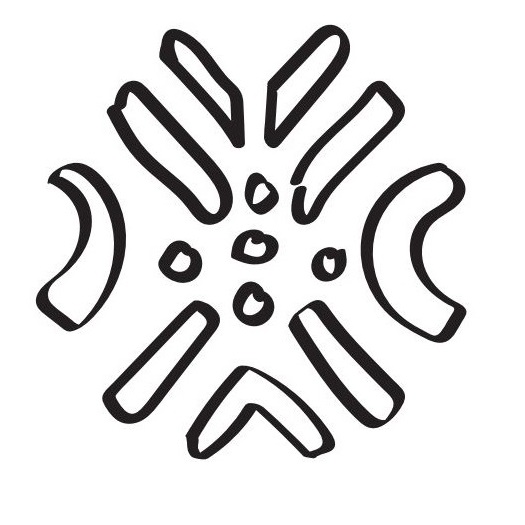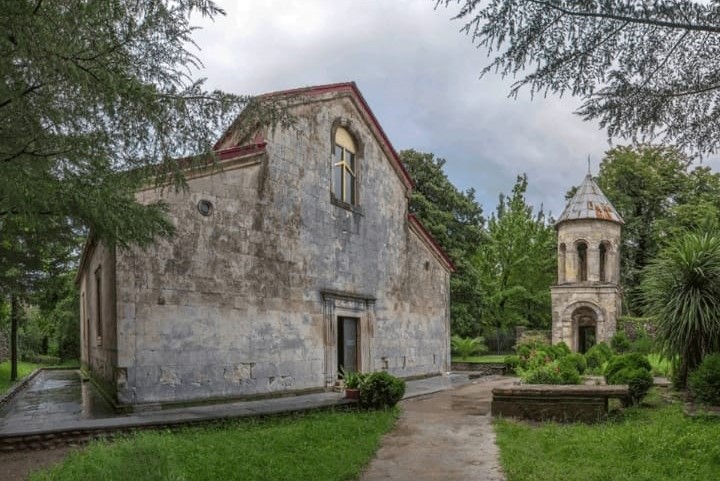Revaz Andghuladze: A Skilled Master Artist.
Revaz Andghuladze is truly a Renaissance man, in whose hands any material, be it stone, wood, or metal, acquires distinct characteristics. The portraits he carves out of stone or wood are reminiscent of the bas-reliefs in old churches.
His memories of childhood are fasciating. He was born in 1950 in a large family in the village of Aral in the Adigeni region. His father was a carpenter, his grandfather a stone mason. His grandmother’s father also worked with stone and wood, as well as cattle-shoeing work. The area where Andghuladze spent his childhood was inhabited by many craftsmen. As a schoolboy, he couldn’t wait to go out in the neighborhood after class and help the blacksmiths and carpenters, all of whom had been practicing their trades since childhood. He not only acquired professional skills from the old masters, but also heard many stories about how craftsmen from his region traveled to different countries, how they developed their craft and how they worked. In his diaries, which he has kept in a personal archive, he records many details about old Meskhetian masters, including their names and surnames, with great accuracy.
 Bas-relief portrait in stone
Bas-relief portrait in stone
After graduating from secondary school in his village, where he studied from 1957 to 1967, Revaz Andghuladze continued his studies at the Faculty of Economics at the Akhaltsikhe Agricultural Technical College (1968–1970) and graduated with honors. All the while, he was also working to support his family. For this reason, when he enrolled at the Faculty of Economics at the Tbilisi Pedagogical Institute in 1971, he did so as a corresponding student, unable to move to the capital. After graduating from the institute, Andghuladze returned to Akhaltsikhe and, in 1978, started teaching accounting at the Akhaltsikhe Technical College.
One of the most interesting periods in his life began in 1977, when Revaz traveled to Moscow to study in the Pedagogical Faculty at the K. A. Timiriazev Agricultural Academy for two years. During his time as a student, he managed to travel to the Baltic countries and Ukraine—to Kyiv and Kharkiv specifically—where, with great interest, he familiarized himself with the ethnographic museums. It was also at this time that the creative interests and impressions of his childhood awakened in him. He grew interested in studying the architecture of Meskhetian halls (darbazi), Meskhetian household objects, and dry-stone building techniques, the art of which was on the verge of being lost at that time. Rezo, as he is also known, undertook a systematic study of these techniques, how to work with stone and master the complicated craft of bas-relief. The portrait bas-reliefs he carves in stone seem to look at you from the depths of centuries. These works are distinguished by a variety of expressions, perhaps the most difficult task in portraiture.

Bas-relief in stone (Javakhi)
In 2002, Revaz was given the opportunity to restore the outer wall of the church of St. George in Nasoplari Okhera, and then the church itself. As he tells us, the most difficult part is fitting the stone correctly. There have been cases when a building has collapsed because the stones did not fit together properly. The color and character of the stone is also very important. It takes a lot of knowledge to choose the right stone, because it is important which carved stone should be used as a corner stone, which one at the top of a window, etc. When you look at this church, you realize the great importance of a sanctuary built in this style. It leaves such a strong impression, as if time stops. All of the stones are so harmoniously attuned to each other, as if they convey the depth and sound of Georgian polyphony.

St. George church of Okhera
In 2010, Andghuladze led the restoration of the Goderdzishvili Hall at the open-air ethnographic museum in Tbilisi. This was an example of a darbazi-style house, in which there is a domed roof structure, logs and beams supported by pillars, and a central opening at the top to allow light to enter and smoke to leave. The hall was built in 1853 in the village of Giorgitsminda in the Sagarejo municipality and was moved to the National Museum in Tbilisi in 1972. The building was badly damaged and had to be completely restored to its original shape. Revaz did most of the work with his own hands, because at that time there were very few skilled craftsmen left in this field. The restoration was done using the same tools that were originally used to build the house. The building is a masterpiece of Georgian traditional craftsmanship and the result of thorough research and experience. (The project was financed by the Swedish Royal Foundation).

Hall of Goderdzishvili

The hall was built in 1853 and transferred to the Ethnographic Museum in Tbilisi in 1972.
Revaz is also engaged in teaching and shares his work and experience with young people. He helps children learn useful agricultural skills. In particular, he teaches skills for making agricultural tools which could be used forbasket-weaving, working with cane, working with stone, or building a house. Over the years, the master has put many apprentices on the right path and helped them find their own place and purpose in life. ფოტო -7 Bas-relief portrait in wood
Revaz Andghuladze is highly respected in the Akhaltsikhe region as an artist and specialist, familiar with all the details of both small and large buildings in his region. He has put a great deal of work into the restoration and conservation of the Rabati Castle and other monuments of cultural heritage. He considers himself very lucky, because the work he loves to do and the service he has done in his field have introduced to wonderful experiences and, most importantly, interesting people. Currently, he heads the monument protection service at the Akhaltsikhe City Hall.
Revaz lives in a building in an apartment block. In the yard, there is a workshop in his garage, where you can hear the sounds of tools hitting stone. When you enter the workshop, you may not even be noticed, he is so immersed in the work. There are many pieces arranged on the shelves, some made of wood and some of ordinary cobblestone. He speaks very engagingly about the process of selection stones, because it is no easy task to find the necessary stones. With his keen eye he selects cobblestones and carves portraits in them. When I saw these pieces for the first time, I felt that they radiated an amazing warmth, and there was something about them that felt familiar, homey. Many foreigners go to Akhaltsikhe to see these pieces, and they all note the same thing that I experienced: each piece is warm, profound, and familiar.

Rezo Andghuladze in the process of work



.jpg)